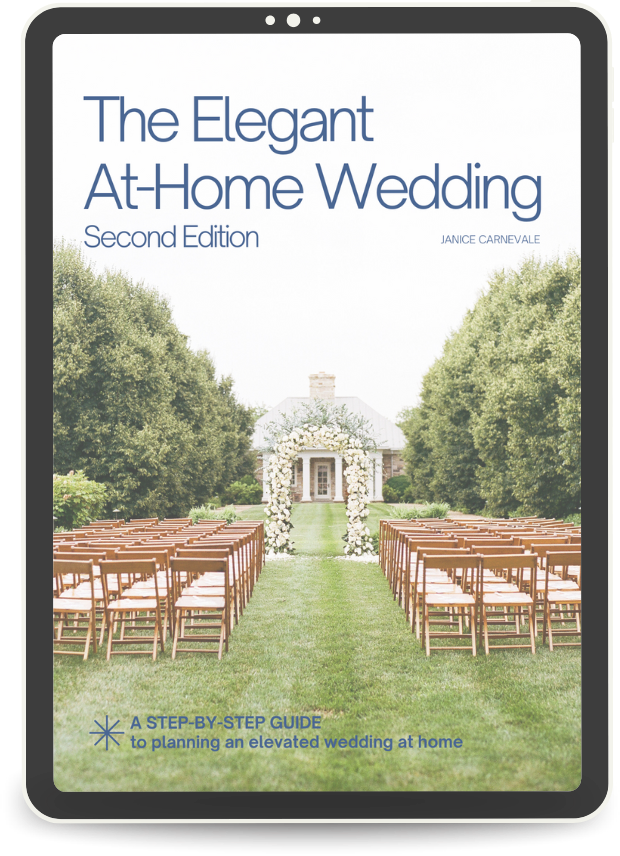DOWNLOAD NOW:
I’ll now briefly walk you through the basics of tents available for rental. Becoming familiar with this information will help you communicate with the tent company and better understand the proposals and contracts that you are given. There are five basic types of tents: pole, Sperry, frame, Navitrac and marquee.
Pole tents have the classic “circus” look with the high peaks of the (usually) white vinyl top. The tent is held in place by guylines that are staked into the ground around the perimeter, while tall center poles create the high peaks. A pole tent needs about eight feet of clearance around the perimeter to accommodate the length of the guylines. If you are planning on setting up a pole tent near a landscaped or hardscaped area, or if the property has underground power, sewer or irrigation lines, ground staking may become a concern. A pole tent does not allow for a completely open floor plan; you will have to work around the center poles that hold up the tent’s ceiling. Typical pole tents use metal side and center poles that are not aesthetically pleasing, so most people will cover them with white fabric to match the tent top. These covers can be rented from the tent company at an additional cost.
Sperry tents are the luxury version of a white vinyl pole tent. Sperry tent tops are made from a beautiful sailcloth that lets light pass through and makes for beautiful photographs. They are set up with handsomely finished wooden center and side poles instead of the metal poles that come with a standard pole tent, so they do not require fabric pole covers. Just like standard pole tents, they require guylines, ground staking, an extended perimeter, and they do not offer a completely open interior floor plan.
Frame tents are another popular option for weddings and special events. Their ceiling structures are created with a metal frame and crossbars to look more like the shape of a roof of a house. Frame tents may be held down with weights (usually rain barrels) or by guylines. They do not need as many guylines as a pole tent, nor do they require as wide of a perimeter for staking The floor plan inside a frame tent is completely open because there are no center poles to work around. The metal ceiling frame, however, is not attractive, so you might decide to rent a fabric ceiling liner to cover it. Frame tents generally come with either a white or clear top. If you opt for the clear top, you won’t need to rent a fabric ceiling liner.
A variation of a frame tent is called a Navitrac tent. It has a different and sturdier frame than the traditional frame tent, and is recommended for use when you are facing worrisome weather. Since these and frame tents do not require ground staking, they can be placed directly against the side of a building and be held down with weights.
Marquee tents aren’t actually tents for gathering under. They are frame-tent-style but only 10 feet wide, and are set up to serve as hallways or corridors connecting different tents and buildings. Usually you would use these in poor weather scenarios to link different areas together, for example, to provide a covered path from the tents to the restrooms or to the caterer’s prep area.
Let’s talk about tent side walls for a moment. I want you to know that if you need to put side walls on reserve for your wedding day rain plan, you have some options. There are solid white side walls available, in case there is something unattractive outside your tent and you want to block the view. There are also side walls that have clear “windows” on them that give your guests a limited view outside. And there are completely clear side walls that will protect your guests from the elements while still maintaining some of the open tent feel that you are probably hoping for.
For more information on tents for your backyard wedding, please see page 20 in The Elegant At-Home Wedding!
Photos courtesy of Katie Stoops Photography and Michelle Lindsay Photography. Tents by Skyline Tents.




